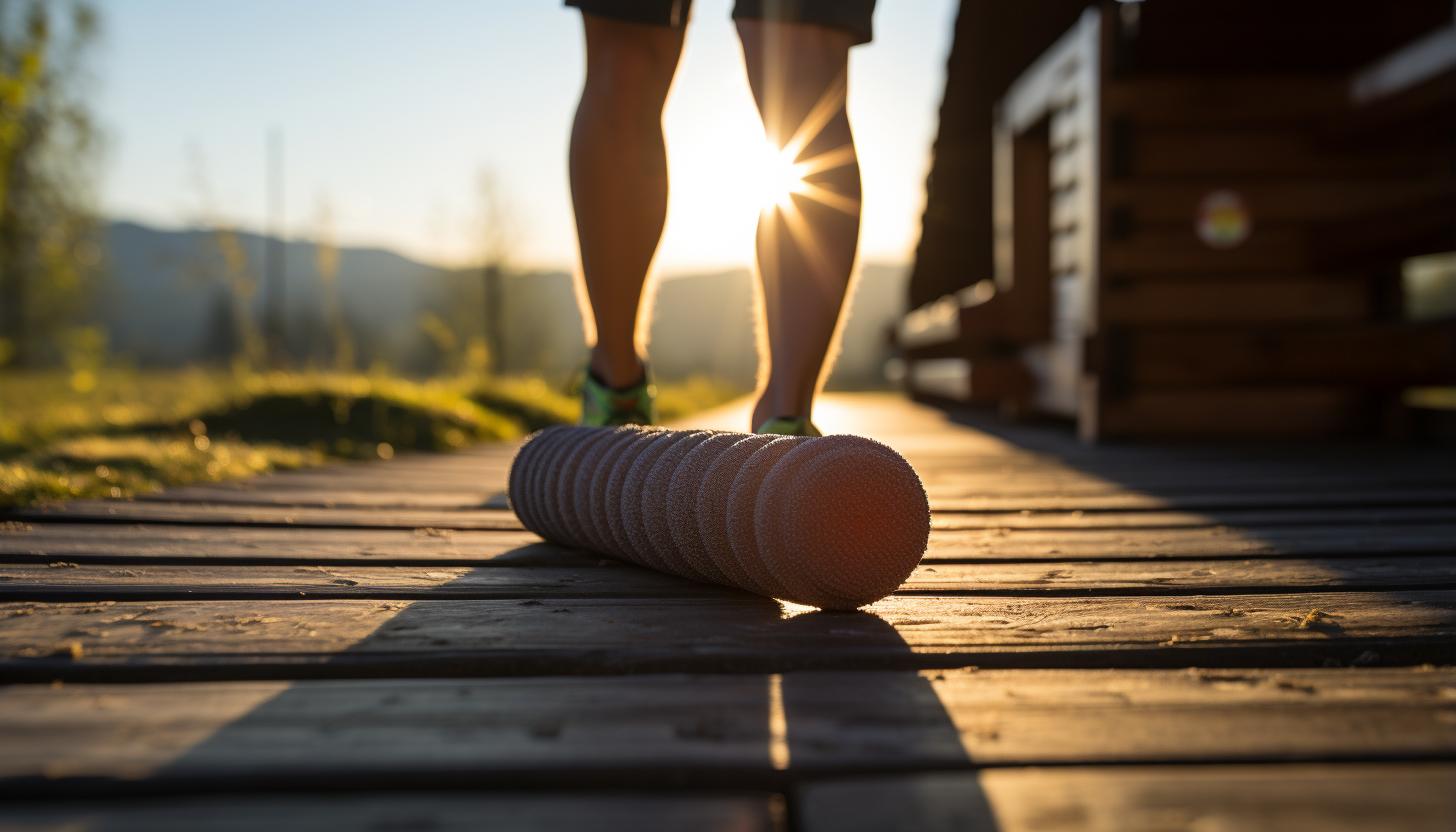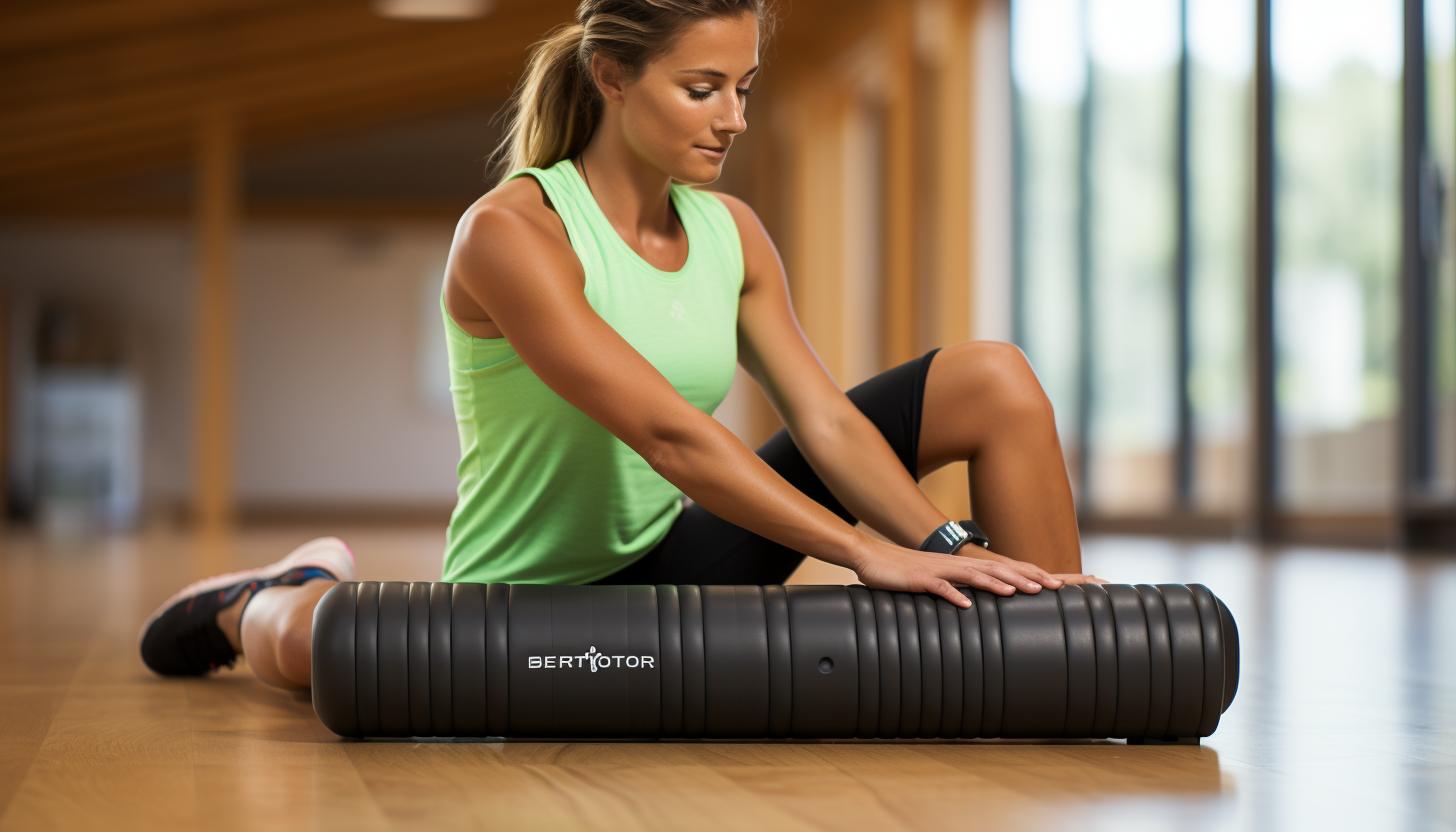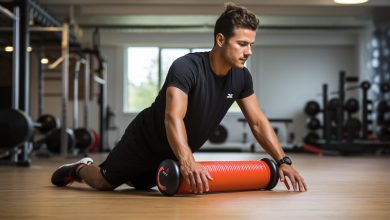Foam Rolling for Faster Recovery: How to Make It a Habit

Picture yourself feeling sore and fatigued after a tough workout. You want to recover quickly so you can get back to training at your best. That’s where foam rolling comes in.
This article will show you how to make foam rolling a daily habit for faster recovery. Discover the benefits, find the right foam roller, learn proper techniques, and overcome challenges to stay consistent.
Get ready to roll away those aches and pains, and optimize your performance like never before.
The Benefits of Foam Rolling for Recovery

Foam rolling can help you speed up your recovery process after intense workouts. This self-myofascial release technique involves using a foam roller to apply pressure to specific areas of your body, targeting tight muscles and knots.
By incorporating foam rolling into your post-workout routine, you can experience several benefits that aid in recovery.
One of the main benefits of foam rolling is increasing flexibility. When you use a foam roller, it helps to break up adhesions in the muscle fascia, which are like knots or trigger points within the muscle tissue. By releasing these adhesions, you can improve the elasticity and range of motion in your muscles, allowing for better overall flexibility.
Additionally, foam rolling has been shown to reduce muscle soreness. Intense exercise can cause micro-tears in your muscle fibers, leading to delayed onset muscle soreness (DOMS). Foam rolling helps to increase blood flow to these damaged areas, promoting healing and reducing inflammation. As a result, you may experience less discomfort and faster recovery time between workouts.
Incorporating foam rolling into your daily routine is crucial for maximizing its benefits.
Incorporating Foam Rolling Into Your Daily Routine

To incorporate foam rolling into your daily routine, you’ll need to find a convenient time and space where you can perform the necessary exercises. Foam rolling before workouts has been shown to improve performance and reduce muscle soreness. By using a foam roller to apply pressure to specific areas of your body, you can increase blood flow and oxygen delivery to your muscles, preparing them for the upcoming activity.
Foam rolling is not only beneficial for pre-workout preparation but also for injury prevention. It helps break up adhesions and scar tissue in the muscles, improving their flexibility and reducing the risk of strains or tears. Research has shown that regular foam rolling can increase joint range of motion and enhance overall athletic performance.
When incorporating foam rolling into your daily routine, it is important to prioritize consistency. Find a designated time each day when you can dedicate at least 10-15 minutes to this practice. Choose a quiet space where you can focus on performing the exercises correctly.
Remember to start slowly and gradually increase the intensity as your body adapts. Be sure to target all major muscle groups during each session, paying extra attention to areas prone to tightness or discomfort.
Finding the Right Foam Roller for Your Needs

When searching for the perfect foam roller, it’s important to consider factors such as size, density, and texture that best suit your specific needs. Choosing the best foam roller for beginners can be overwhelming with the wide variety of options available in the market.
Foam rolling has gained popularity as an effective recovery method due to its ability to reduce muscle soreness and improve flexibility. Compared to other recovery methods, foam rolling is affordable, convenient, and easy to incorporate into your daily routine.
For beginners, it is recommended to start with a softer foam roller with lower density. This will provide a gentler massage and allow your muscles to adapt gradually. As you become more comfortable with foam rolling, you can progress to firmer rollers with higher density for deeper tissue release.
The size of the foam roller also plays a crucial role in targeting specific muscle groups. Longer rollers are ideal for larger muscle groups like the back and legs, while smaller rollers are better suited for areas like the calves or forearms.
Additionally, considering the texture of the foam roller can enhance your rolling experience. Smooth surface rollers offer a consistent pressure across muscles, while textured ones provide added stimulation and help break up adhesions.
Proper Techniques for Effective Foam Rolling

Using proper techniques is essential for getting the most out of your foam rolling routine. To maximize the effectiveness of your foam rolling sessions, avoid these common mistakes:
– Rolling too fast: Slow down and focus on each muscle group to ensure you’re effectively targeting knots and trigger points.
– Applying too much pressure: While it’s important to apply some pressure, avoid excessive force as it can cause discomfort or even injury.
– Neglecting other areas: Don’t forget to roll all major muscle groups, not just the ones that feel tight or sore.
In addition to using proper technique, incorporating stretching exercises can further enhance the benefits of foam rolling. Here are a few exercises you can try:
– Quadriceps stretch: Lie face down with one leg extended behind you and the foam roller positioned under your thigh. Slowly roll back and forth to target tight quads.
– IT band stretch: Lie on your side with the foam roller placed beneath your outer thigh. Roll from your hip down to just above your knee, focusing on any tender spots.
– Thoracic spine extension: Position the foam roller horizontally across your upper back. Lean back gently, allowing the roller to massage along your spine.
By avoiding common mistakes and incorporating stretching exercises into your routine, you’ll optimize the benefits of foam rolling for faster recovery.
Now let’s explore how you can overcome challenges and stay consistent with this self-care practice.
Overcoming Challenges and Staying Consistent With Foam Rolling

To overcome challenges and stay consistent with foam rolling, it’s important for you to establish a routine and set aside dedicated time each day. Staying motivated can be difficult at times, but incorporating foam rolling into your daily regimen will greatly benefit your recovery and overall performance. One way to stay motivated is by setting specific goals for yourself. Whether it’s improving flexibility or reducing muscle soreness, having a clear objective can keep you focused and driven.
Troubleshooting common foam rolling mistakes is also crucial in maintaining consistency. One mistake people often make is rolling too quickly over the muscles. Remember, the purpose of foam rolling is to target trigger points and release tension, so take your time and focus on each area thoroughly.
Another common mistake is applying excessive pressure. While some discomfort may be expected, if you experience sharp pain or numbness, you are likely exerting too much force. Adjust the intensity accordingly to ensure effective yet safe results.
Lastly, make sure to use proper form while foam rolling. Maintain good posture and engage your core muscles for stability. By avoiding these mistakes and staying motivated through goal-setting, you can establish a consistent foam rolling routine that will enhance your recovery process significantly.
Conclusion
So, there you have it – the truth about foam rolling for faster recovery.
By incorporating this simple yet effective technique into your daily routine, you can experience a wide range of benefits that will enhance your overall well-being and athletic performance.
Remember to choose the right foam roller for your needs and practice proper techniques to ensure maximum effectiveness.
Despite any challenges you may face, staying consistent with foam rolling is key to reaping its rewards.
So why wait? Start making foam rolling a habit today and see the difference it can make in your recovery journey.






